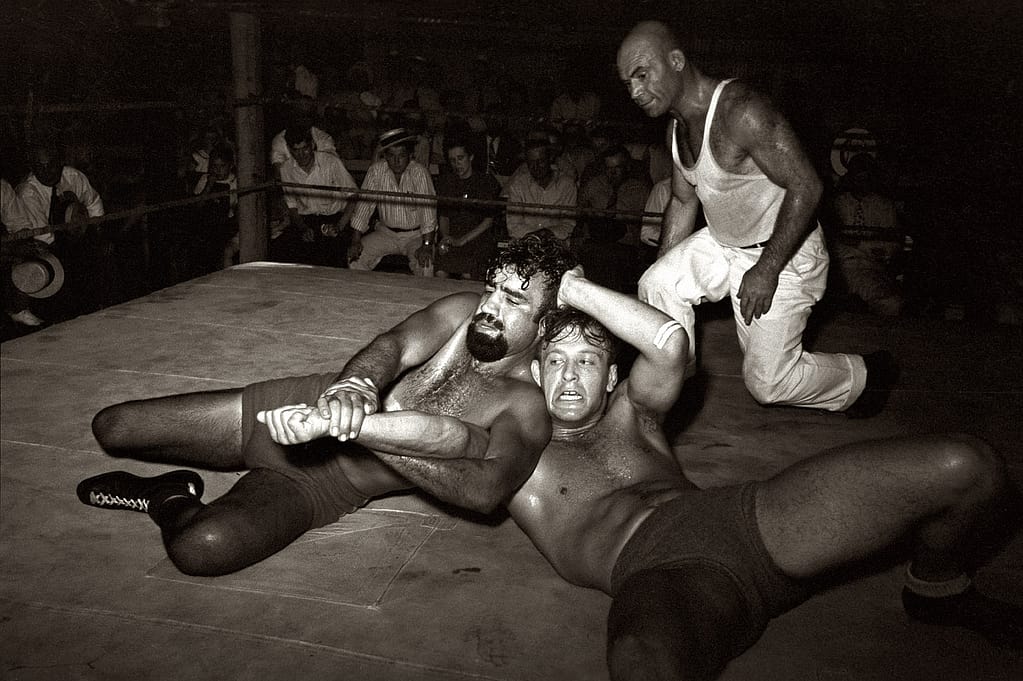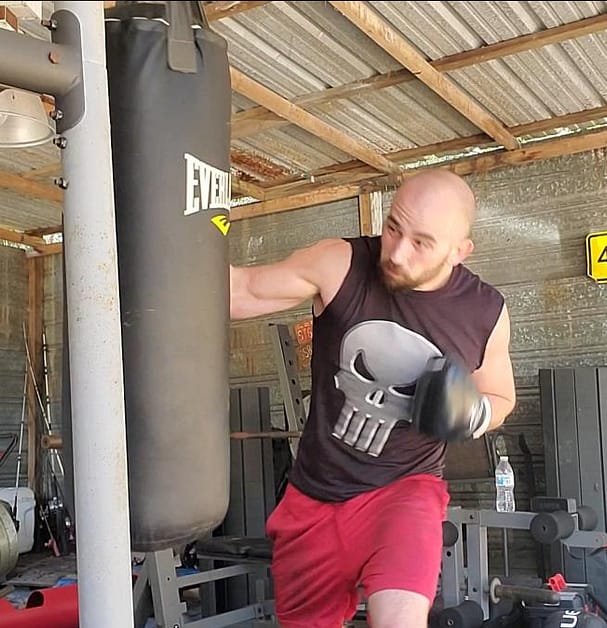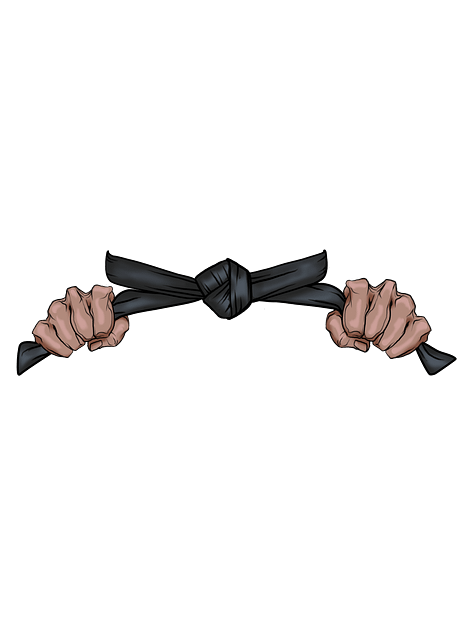Normally when I start a wrestling culture article, I go over the basics such as ‘what is wrestling’. But today, I don’t think I have to do that, because if you’re here you’re likely pretty well versed in grappling. Today we’re discussing a style that’s not well known outside of the grappling community, but is recognized for it’s effectiveness within it: catch as catch can.
If you need a refersher, I’ll refer you to one of my other wrestling culture articles here.
Catch wrestling, also known as catch as catch can, was developed in Britain around 1870, and then later popularised by the wrestlers of traveling fairs who would develop their own submissions, or “hooks”, into their wrestling. Catch as catch can derives from a number of different styles, such as English styles like Cornwall and Devon wrestling, Irish collar-and-elbow wrestling, Greco-Roman, and indian styles.
History of Catch As Catch Can
It started in 1871, when John Graham Chambers, a Welsh sportsman, wanted to produce a new system of wrestling at Little Bridge Grounds, West Brompton, which he named “The Catch-as-catch-can Style’. But at the time, the idea was met with very little support at the time, and a few years after chambers was convinced to adopt a different style of wrestling.
But some promoters and practitioners of the style, such as J. Wannop of New Cross attempted to bring the system into the public eye. The development of the Cumberland and Westmorland Amateur Wrestling Society brought the style to the forefront, and an annual midsummer gathering at the Paddington Recreation Ground awarded special prizes for competition in the catch as catch can style.
Catch wrestling was a new principle to many of the spectators, but it was welcomed as a step in the right direction regarding the advancement of the loose-hold system, which had previously seen struggling on the ground and using submissions as objectionable.
Then catch wrestling reached the United States in the late 19th century, and it became extremely popular among the wrestlers of carnivals. These wrestlers would challenge the locals and offer a cash reward if they could defeat the carnival’s wrestler by submission or pin. As the sport evolved in this manner, the real threats of assault by weapons or an angry crowd became a stark reality for the carnival wrestling. That, combined with an easier way for profit, eventually made way for professional wrestling to begin forming in it’s infancy, by way of rigged contests between two carnival grapplers.
Use In Martial Arts
And while one branch of catch wrestling evolved into the world of pro wrestling we know today, catch as catch can also continued to grow as a real fighting style as well. A notable match in 1914 saw an American catch wrestler and a world judo champion battle in a submission match, that saw the catch wrestler walk away the victor.
Of note as well was Karl Gotch, a catch wrestler and a student of Billy Riley’s “Snake Pit” school of martial arts in Greater Manchester. Gotch taught catch wrestling to Japanese pro wrestlers in the 70’s, including Antonio Inoki, Hro Matsuda, Satoru Sayama, and Yoshiaki Fujiwara, among others. And starting in 76, Inoki hosted a series of mma bouts against champions of other disciplines. These bouts resulted in a growing popularity of mma in Japan.
These students also formed the original UWF, Universal Wrestling Federation, in Japan in 1984, which gave rise to shoot style matches that were closer to real fights than pro wrestling. The UWF was led by catch wrestlers and gave rise to the MMA boom in Japan.
Notable Catch Wrestlers In MMA
Now, I won’t be able to go into every great fighter that used catch wrestling, but I can certainly name a few of the most famous. I won’t go into their full careers, for even the three men I name here would take up a whole book, but I will mention their starts.
Kazushi Sakuraba– Sakuraba started off as an amateur at fifteen, and was a stand out talent in high school, and finished as high as second in the nation before joining the wrestling squad of Chuo University, a team that could count gold medalists among their numbers.He won the East Japan Freshman championship in his first year and served as their team captain thereafter. In his senior year, he finished fourth place in the All-Japan tournament. Amongst his notable wins was a defeat of future Olympic bronze medalist Takuya Ota. And after a stint in pro wrestling, Sakuraba wound up as a late-hour substitute of Hiromitsu Kanehara to represent the Kingdom Pro Wrestling league in the UFC’s Ultimate Japan Tournament.
The tournament was intended for heavyweights, but Sakuraba who weighed 183 pounds (middleweight by modern standards), was nearly twenty pounds beneath the UFC’s 200 pound designation for the weight class. Having reporting himself as 203 pounds (Light heavyweight by modern standards) in order to gain entry, Sakuraba was paired off against the 240 pound Brazilian jiu-jitsu black belt and former Extreme Fighting champion, Marcus Silveira. And the rest, as they say, is history.
Frank Shamrock– Born into a Native and Mexican American family, Frank Juarez was placed in various foster homes, group homes, and crisis centers from the age of twelve onward. He had many run-ins with law enforcement until eventually he went to live with Bob Shamrock, who with his wife Dede, had taken in thousands of troubled boys (including Frank’s older foster-brother Ken). Juarez went to live with Shamrock at his home in Susanville, California, and was officially adopted by Shamrock at the age of 21. In 1994, Ken began to train Frank in what they simply called “submission fighting”, which was catch-as-catch-can modified for No Holds Barred fighting. Frank accompanied his brother to bouts in the Ultimate Fighting Championship (UFC) and grew to love the sport. He became a member of Ken’s training school, the Lion’s Den, and made his mixed martial arts debut in the Pancrase organization in Japan.
Shamrock debuted as a fighter in Pancrase on December 16, 1994 in one of the biggest events in mixed martial arts history to date, the King of Pancrase Tournament. He was an important underdog against top Pancrase fighter Bas Rutten but went on to defeat Rutten in a close decision victory. Shamrock faced off against expert grappler and eventual tournament finalist Manabu Yamada later that night, but was defeated via submission at 8:38 of round 1. This wouldn’t stop Frank, though, who would continue to evolve his style of catch as catch can and have a successful MMA career.
Josh Barnett– Born and raised in Seattle, Washington, Barnett had a troubled childhood and often got into fights. Barnett has two half brothers, Gary Norton, and Jackson. He was put into anger management programs at a young age and learned to cope with his anger by participating in athletics. Barnett attended Ballard High School, where he excelled at wrestling, football, and also trained in judo and kickboxing.
Barnett’s documented professional debut was in early 1997 in Washington, competing for United Full Contact Federation. He won via rear-naked choke submission under three minutes into the fight. He would continue to dominate, reaching a 9-0 record with seven first-round stoppages and wins over future UFC Hall of Famer Dan Severn, Bobby Hoffman, John Marsh, and Bob Gilstrap twice. With a 9-0 record, Barnett was invited to compete in the UFC.



